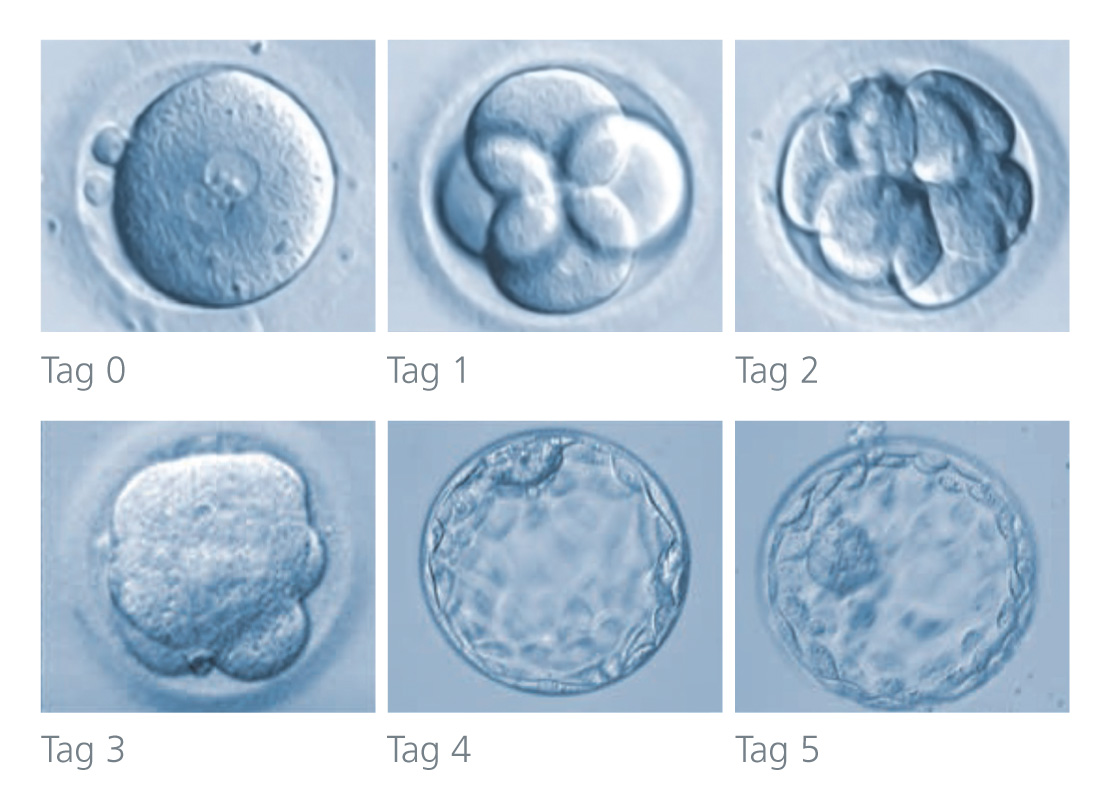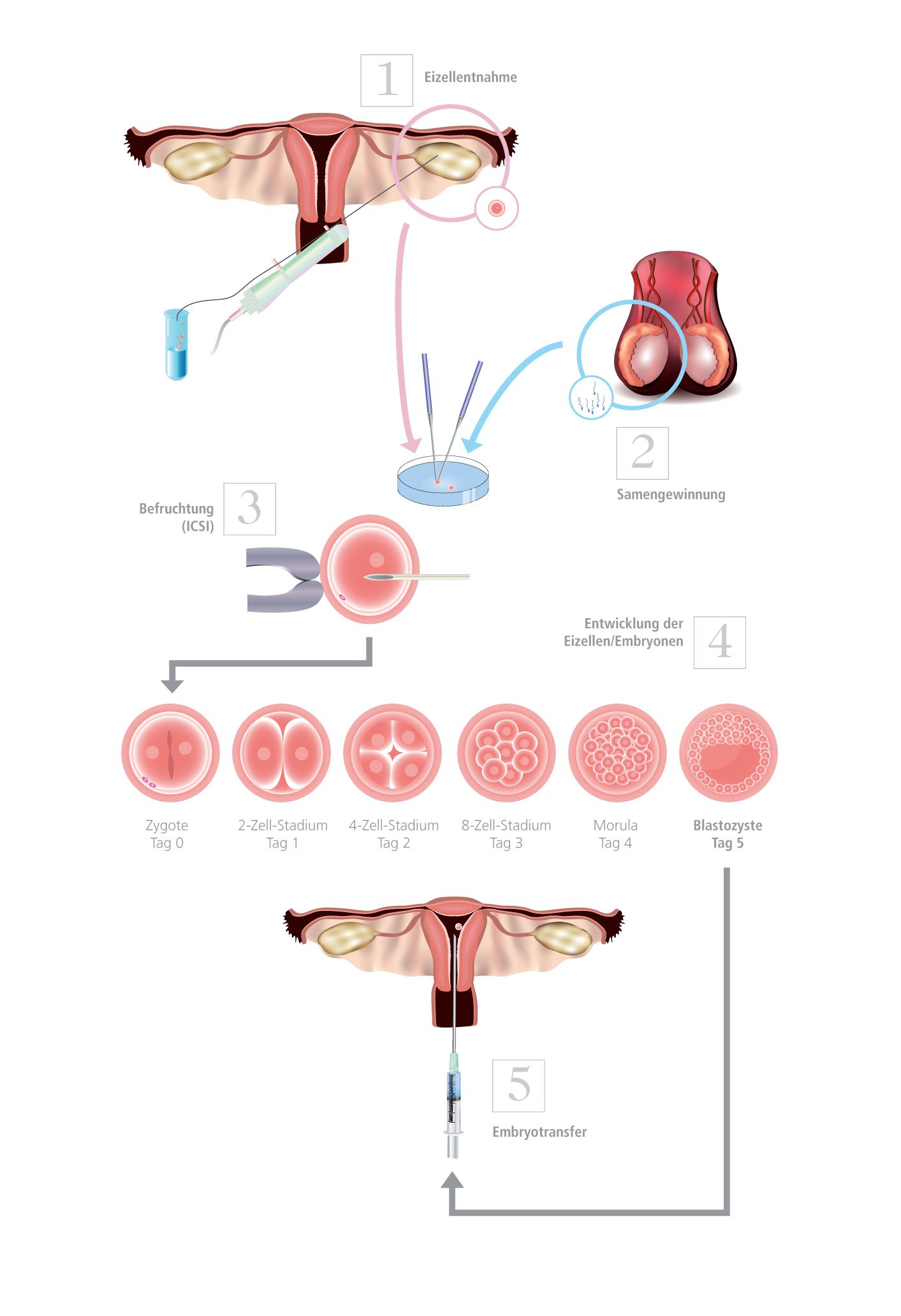The aim of this medical specialty can already be inferred from the term Reproductive Medicine. It means understanding and copying nature right down to the smallest details, i.e. supporting human procreation using medical-technical procedures designed to help sub-fertile couples. Based on current scientific knowledge, an important role is played by a treatment option called blastocyst culture.
During a thorough medical consultation at the beginning of each fertility treatment, the doctor, together with the couple, will decide on the most suitable form of treatment, based on laboratory results, diagnostic findings etc. Details on the medical indication, legal framework conditions as well as on the sequence of the treatment will also be taken into account during this consultation.
IVF treatment involving blastocyst culture (see schematic representation below) implies that the oocytes are fertilized with the sperm outside the female body in the laboratory (IVF/ICSI/IMSI). The fertilized eggs are placed in a special nutrient medium and cultivated in an incubator until they have reached a specific stage of embryonic development.
Embryonic development can be closely monitored and assessed using state-of-the-art laboratory technology. Once the embryos have reached the relevant developmental stage (blastocyst = embryo capable of implantation) they are placed into the woman’s uterus (embryo transfer).

Why is it sensible to transfer embryos at the blastocyst stage?
Ideally, embryo transfer is performed on the fifth day following fertilization, which corresponds to the time at which a naturally conceived embryo finally reaches the womb to implant itself in the uterine wall after having travelled through the Fallopian tube.
When transferring the embryo, particular attention will be paid to placing the embryo 0.5 – 1 cm below the highest point of the uterine cavity. Scientific evidence suggests that this is the normal site of embryo implantation.
This approach requires the accurate prior measurement of the position and length of the uterine cavity, since the condition of the reproductive organs may vary from one woman to another. In addition, hormonal treatment set out in a customized stimulation plan is essential to encourage proper endometrial build-up.

The advantages of day 5 blastocyst transfer (see fact box) over the transfer of day 2/3 embryos are supported by numerous substantiated scientific studies. They clearly show that blastocyst culture allows for, among other things, the assessment of embryo implantation potential. As Prof. Dr. Herbert Zech, founder of the IVF Centers having the same name points it out, a precondition for carrying out blastocyst culture are well-equipped laboratories and highly qualified biologists backed by many years of experience:
“At our IVF Centers, we introduced the systematic performance of blastocyst culture for the first time in 1996, thus setting a new international benchmark. This treatment method designed to improve the chances of achieving pregnancy is now state-of-the-art in reproductive medicine. Therefore, today, our team can draw on the know-how from over 20 years of successful experiences with IVF therapies involving blastocyst culture.”
In summary it can be said that IVF treatment involving blastocyst culture, optimized stimulation protocols and embryo transfer techniques are likely to encourage a successful therapy outcome. In the end, however, nature determines whether the couple’s desire for a child comes true.
Embryo Transfer at the Blastocyst Stage
- The condition and thus the implantation potential of the embryo can be identified and assessed
- better synchronization between uterus (womb) and embryonic development
- reduced intensity of uterine contractions from day 5 may prevent the embryo from being rejected
- increased chances for successful embryo implantation (in the uterus)
Links:
» Fertility treatment process
(Topic-Series | https://www.fertility-treatment-blog.com)
» Hormonal stimulation in fertility treatment
(Topic-Special | https://www.fertility-treatment-blog.com)
(Start page | https://www.fertility-treatment-blog.com)
(Page | https://www.fertility-treatment-blog.com)

















